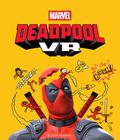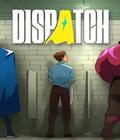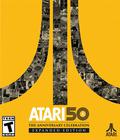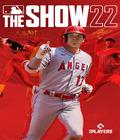Buy MLB The Show 22
Last year, Sony's MLB The Show series hit a significant milestone; the game not only arrived on the PS5 but also on the Xbox family of consoles. It was surreal to hear of that when the announcement was first made, and it was still met with disbelief when the game arrived on the Series X|S, Xbox One, and the Xbox Game Pass. With MLB The Show 22, the series hits another milestone as it debuts on the Nintendo Switch and we see how the game fares on non-PlayStation systems.
Booting up the game for the first time starts you with a bevy of control options for five different baseball disciplines. For hitting, you can choose from a directional system where you tilt the left analog stick in a direction while hitting a button, move the cursor to a specific area before hitting a button, or hit a button at the correct time. In all three cases, you can choose between a normal swing, make contact with a bunt, or commit to a full swing. For base running, you can use the left analog stick to point at a base runner and hit a face button for the specific base, use the face buttons to select a runner then use the d-pad to select a specific base, or let the game handle it automatically.
For throwing on the field, you can hold a button and for a specific base and release it when the meter hits the green area, do the same without the meter, flick the right analog stick toward the base direction, or let the game handle it automatically. Fielding doesn't have too many control differences, except for the option to let the game handle it automatically, but you can change the indicator type to show the actual ball, a range within to catch the ball, or nothing at all.
Finally, pitching has the most options. You can use a cursor to aim where you want the pitch to go and then hit a button to throw. You can use a similar pulse system that has you pitch when the pulse circle is smallest for better accuracy, or you can use a meter similar to what what's used in most golf games. If you use the analog stick for throwing, you can use the right analog stick in an up-and-down motion to determine throw strength and accuracy, or you can use a pinpoint system that uses more complicated right analog stick movements. In all cases, the pitch type is determined by the face button and, in some cases, a shoulder button if the pitcher has it in their arsenal.
For a sports game, that's quite an overwhelming number of options and combinations to consider. While it can be daunting for those coming into the series for the first time, it also ensures that the game can be tailored to all players. That's ultimately a good thing, as some of the different schemes aren't ones you'd initially choose. Analog pitching leaves too much room for error and brings in motions that aren't intuitive. It's still good to have control options, no matter how complicated, so those who want to challenge themselves can achieve more accuracy.
The overall accessibility for all skill levels is a benefit because MLB The Show 22 is one of the best-playing baseball games. This claim isn't a win by default, considering how good the Super Mega Baseball series has been in the last few years. The team at Sony San Diego has done a nice job of making each moment feel exciting, from the diving catches to the intense replays of bats barely missing the ball during a swing — or the thrill of seeing the ball barely clear the wall for a home run. The AI does a convincing job of playing like a pro, while the variable difficulty level is perfect for easing players into a sweet spot of challenging but not too tough. The game has been fine-tuned to the point where only longtime players will be able to spot differences in gameplay from one iteration to another. Casual players going from The Show 21 to The Show 22 would be forgiven for thinking that the gameplay has been static between the two, but it is compelling enough that the lack of major differences doesn't feel detrimental.
If you've never played the previous games, then get ready to be overloaded with a plethora of modes. Exhibition mode lets you play with any MLB, Triple A, or Double A team you want, while Exhibition using Live Rosters lets you play actual games that are scheduled for the upcoming MLB season. Retro mode simplifies the game to play more like the 8-bit classics but with a modern coat of paint. The lack of commentary and the ability to move side to side on either home plate or the mound is humorous, but the mode is fun for those who want to play a modern baseball game with simpler controls.
Home Run Derby is exactly what it sounds like, with offline and online options available. The online version has a few quirks that mar the experience, though. With everyone hitting at the same time, there's no indicator to show which ball is yours, so it takes a few hits to realize the trajectory you should be paying attention to. Also, the notification that someone has disconnected covers enough of the screen that it can lead to some missed pitches if you're not laser-focused.
Other modes that can be done in relatively short sessions, include Moments, which gives you the chance to re-create some of the more memorable MLB moments. It works nicely, with the only knock being that you're restricted to moments in recent baseball history, not events from baseball's long history. Challenge of the Week dials down Moments to just one moment, but the first week's challenge has Shohei Ohtani batting against a pitching Babe Ruth. If the mode continues with these fantasy-style match-ups, it'll be fun to go back weekly to see what else they have conjured up.
Those who enjoy customization will find that the character creation system is as robust as ever. Everything from a double chin to neck size can be touched up, and there are plenty of options to create exactly who you want. Stadium creation also returns, so players have plenty to work with but have a few offbeat options, like creating mountains of dirt that dwarf your ballpark. You have the option to play with your custom ballpark at night, which is a nice touch considering how big of an omission it was last year.
Some of the other modes include the ability to run a team via Franchise or play the Postseason, where you go from the playoffs to the World Series. Those looking for a regular season mode have March to October, which plays out quickly because it focuses on key moments through the season. The big change is that you can now play this through multiple seasons, making it a great option for those who like the feel of Franchise mode at a faster pace.
Road to the Show is the big campaign mode, but it feels slightly off in MLB The Show 22. The story follows a relative unknown who gets drafted very early on. There's nothing out of the ordinary about the player, but some see a spark that can take him far if he gets lucky. It's fine, but it is a stroke of bad luck that last year's story about a two-way player prospect working his way up through the league is better suited here, since Ohtani is this year's cover athlete. That said, the game recycles a ton of content from last year's version, from the opening cut scenes to moments when you need to make choices. It remains fun if you've never played the mode before, but here's hoping that these elements don't return in next year's iteration.
If you're playing online, you now have the option to do co-op with 2v2 and 3v3 setups. It remains rare to get an online sports game with any sort of co-op, but it is a welcome option for those wanting to play with friends or strangers. Custom Leagues is great if you wanted to do Franchise in a multiplayer mode without dealing with other stuff, like staffing and salaries. Curiously, the online 1v1 modes feel a touch restrictive because the only option that's immediately visible to players is Ranked Play. You'll find more incentive for players to stick around and finish games when things get bad, but it can be off-putting for those who want less intensity from their online opposition. Casual Play is only present with friends, and getting there involves going through a bunch of menus to initiate and accept the challenge, far more than what's required for Ranked Play. Team selection is restricted to MLB teams, so there are no minor league teams.
Other than that, expect online play to be acceptable, especially during these first few weeks when people are rushing to the servers. During our time with the early access release via the Deluxe Edition, it was difficult to connect with friends; game requests were sometimes lost because you need to dig through a few menus to find and act on them. Connecting to a game involves sitting on a menu and waiting for the buttons to activate so the team selection can begin. During gameplay, there was a constant pause whenever the ball gets hit and pitchers would see a pause anytime the ball sailed over the plate. The game never disconnects in the middle of matches, and Player Matches can be customized, so your game can be fewer than nine innings if you're afraid of an unstable internet connection. Some work needs to be done to make this better.
A chunk of the game depends on the presence of an internet connection. Diamond Dynasty needs the connection, considering its online focus. Challenge of the Week and Moments also require that connection, as do Custom Leagues and Exhibition mode with the Live Rosters. The really big modes like Franchise, March to October, and Road to the Show are all accessible offline, and with some of those modes only needing a network connection for manual cloud saving, those with flaky online connections or Switch owners who primarily play in places without an internet connection will find that they can play the content that really counts.
Tying all of this together is Diamond Dynasty, the virtual trading card equivalent of EA's Ultimate Team. Just about every other mode produces something for use here, whether it's special cards, profile XP, or Stubs that are used to buy more card packs or other things in the player marketplace. The number of modes slightly surpasses the rest of the game for solo and multiplayer, but they've also been carried over from past games. Showdown is fine if you're willing to pay Stubs to get into the higher-ranked challenges. Playing Mini Seasons is appealing because it reduces the league to eight teams. Conquest is the most engrossing of the solo modes, as you go after a map of challengers like a strategy game. Online play's big draw is Battle Royale, where you draft from a common pool and try to win a tournament. The big thing this year is co-op play, which allows you and a friend to pool your collections to create a super team.
If you're playing on the Xbox family of consoles, the perception of MLB The Show 22 remains impressive but slightly less so. Part of that can be attributed to the fact that most of the modes feel like they've been incrementally updated. The changes are welcome, but nothing feels truly monumental. Those who have played The Show 21 up to this release will notice, but casual players will find those changes to be insignificant. Seeing such a solid baseball game on Xbox consoles two years in a row still makes me giddy, but the lack of anything big makes one wonder.
If you're playing on the Switch, you have to know that the only thing you're missing out on is the Stadium Creator feature, which is also missing from the PS4 and Xbox One iterations. The Switch version isn't missing much else, though. Road to the Show might have a few of the talking head videos changed out in favor of talk radio-style segments, but that's a minor change. Everything's here, from the teams to the commentary. There's cross-play between the platforms, and there's also cross-saving for just about every one of the major modes. You can even download the same custom players and logos created by other community members from other platforms. Time will tell how future iterations of the Switch version will fare, but this is quite impressive for the debut.
As great as it is to get cross-saves and cross-play between all platforms, players will be disappointed to learn that the affair is less than perfect in execution. Try linking your The Show account on the Switch, and you'll be met with a long enough delay from button press to actual code generation that you'll wonder whether you've soft-locked the game. The screen with the code stays in place after the account has been successful linked, even though the on-screen instructions say otherwise. If you're cross-saving, be aware that the Switch iteration displayed completely incorrect timestamps when we tested it, making it confusing if you return to the game after a short break and are confused as to why your cloud save is from decades ago. Also, if you are going ahead and buying the game on two different platforms, expect to have any bonuses overwritten when profiles merge. For example, those who buy the deluxe edition on multiple consoles will only have bonus currency and packs from one platform, not both.
If you've played last year's iteration, then you know what to expect from the visual quality in MLB The Show 22. The player models look awesome, and the coaches are a little less detailed. The crowds fare a little worse but not to the point where they have the dreaded dead eyes. Animations look great, and this is especially true of the facial animations and lip sync, which give you a perfect idea of what each player is feeling even without them being audible. Lighting is fantastic in the stadiums, and the shadows are an impressive part of the graphical package, but you will see a blurred glow on some of the players if you look hard enough. The frame rate hits 60fps most of the time, with some minor dips if things get too busy, but that doesn't happen too often.
On the Switch, the graphics are different but expected, considering the difference in hardware. The lighting isn't as robust, so there are halos around things like bats, and the players tend to be brighter in shadowed areas. Textures for uniforms tend to be blurrier, but the players look rather nice thanks to robust facial animations. The stadiums only sport a few blurry billboards, so they really stand out. The frame rate tries to stay at 30fps, and while there are moments when you can be fooled into thinking the game is running at 60fps, the frame rate takes a big dip during cut scenes, which play out at probably 20fps or less. Depending on your outlook, there are no performance differences for docked or portable mode beyond resolution.
The audio, on the other hand, is the same regardless of which console you're playing the game on. The licensed soundtrack is a surprising mix of genres that hits just as hard as last year's version. The sound of bat cracking against the ball remains crisp no matter where you play it from, and the use of surround sound is excellent, as you can hear both teammates and the crowd spouting random one-liners during the quieter moments. The game has a new commentary team, and their performance makes you feel like it's a live broadcast, even though a few observations are repeated between different players and a few games apart. PlayStation fans will appreciate this the most, since they've heard the same commentary team from MLB The Show 21 for a long time.
Your impressions of MLB The Show 22 are going to vary depending on the platform you're on. For Xbox players, this remains a solid baseball game that players of all skill levels can enjoy thanks to numerous options and modes. With it being available on the Xbox Game Pass on day one, it's an easy reason to try it out. Those who lived and breathed The Show 21 will find the improvements to be minimal. For Switch fans, there are some rough parts that dull the game's impressiveness, but the presence of a sports simulation on a system that's starving for them should catch players' attention. The Switch is going to be a boon for those who like to play on the go, especially since The Show 15 was the last time it went portable on the Vita. Now if only the series could make its way to the PC ….
Score: 8.0/10
More articles about MLB The Show 22











 Take your Ballplayer across game modes to own every at-bat, every pitch, and every play and now you have even more ways to play than ever before.
Take your Ballplayer across game modes to own every at-bat, every pitch, and every play and now you have even more ways to play than ever before.









